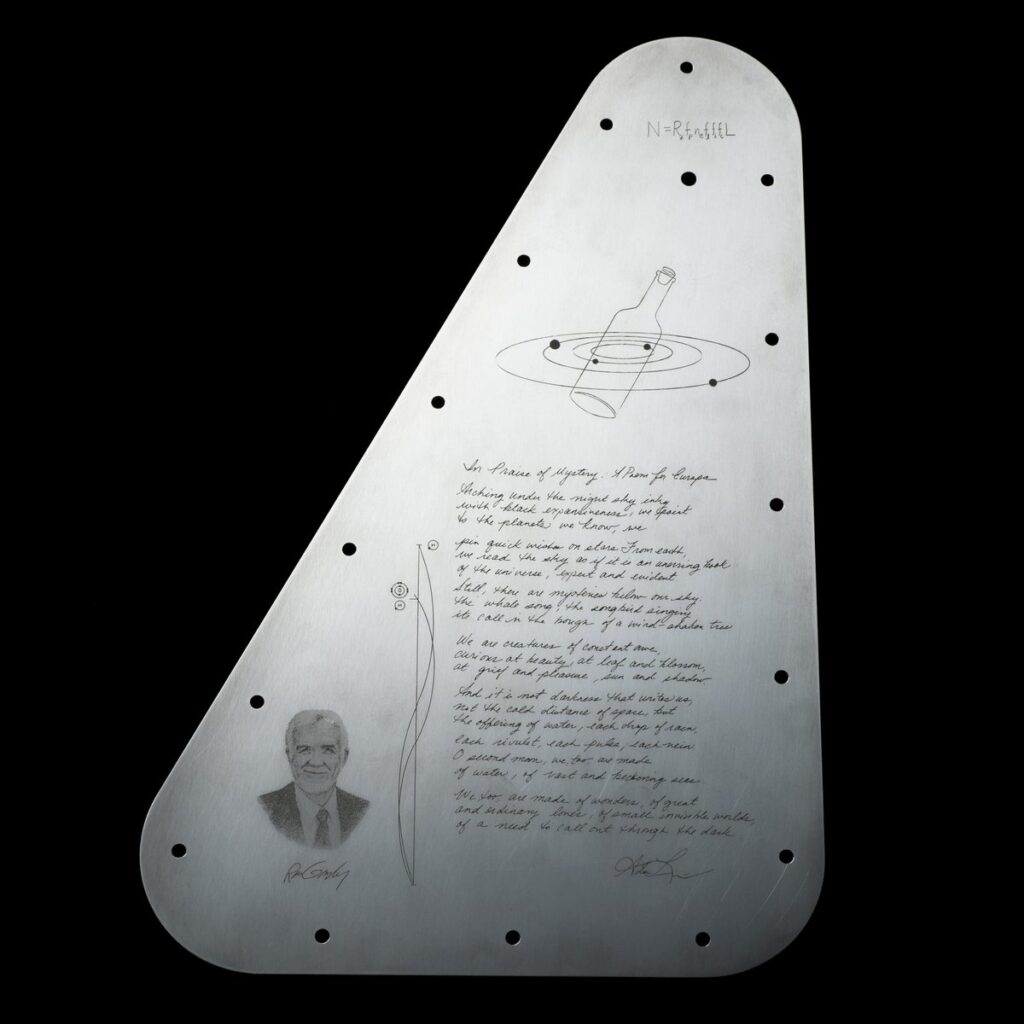As the Europa Clipper blasts off to Jupiter’s moon Europa in October 2024, it carries a unique message. This message isn’t for current inhabitants (there likely aren’t any), but a beacon for the future.
What’s on the message?
- A Poem: A beautiful verse by U.S. Poet Laureate Ada Limón expresses humanity’s wonder about Europa’s hidden ocean.
- Names from Earth: Over 2.6 million people submitted their names to be included on a microchip, a symbol of our collective curiosity.
- The Language of Water: The word “water” is etched in 103 languages, highlighting the essential role water plays in life as we know it.

Inspired by the Past: This message echoes the Voyager Golden Record, carrying a piece of Earth on a long journey.
A Message for the Future: While Europa might be uninhabited now, the message serves as a potential time capsule for future explorers, sparking their imagination and fostering a sense of connection.
Europa’s Secrets Unveiled: The real mission goes beyond the message. The Europa Clipper will:
- Study the Icy Moon: Analyze Europa’s ocean, icy shell, and surrounding environment to see if conditions favorable for life could exist.
- Protecting Pristine Environments: After its mission, the spacecraft will be directed to crash into another moon to avoid contaminating Europa’s potentially life-supporting ocean.
A Leap Forward: The Europa Clipper mission marks a giant leap in our search for life beyond Earth. The message it carries signifies our collective curiosity and paves the way for exciting discoveries that could revolutionize our understanding of the universe and our place within it.
The Europa Clipper mission signifies humanity’s unwavering quest to understand our place in the cosmos. The message it carries is a testament to our collective curiosity and a bridge to future generations who may one day unlock the secrets of this intriguing moon. While the chances of encountering intelligent life on Europa are slim, the mission serves a greater purpose.
By unraveling the mysteries of Europa’s ocean and its potential to harbor life, we gain a deeper understanding of the building blocks necessary for life as we know it. This knowledge could play a pivotal role in the ongoing search for habitable exoplanets and the possibility of extraterrestrial life.
The Europa Clipper is not merely a scientific endeavor; it’s a symbolic gesture, a message in a bottle cast out into the vast ocean of space. It represents our enduring hope, our yearning to connect with the unknown, and our persistent pursuit of knowledge that could redefine our place in the universe.



















